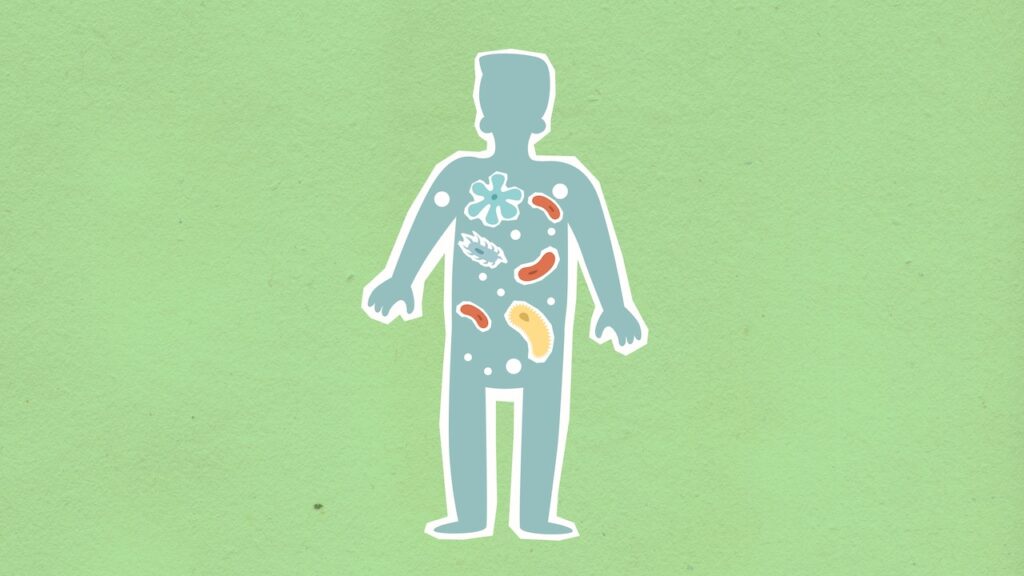Zantac, also known as ranitidine, is a medication used to reduce stomach acid. It helps with problems like heartburn, stomach ulcers, and gastroesophageal reflux disease (GERD). Zantac and other ranitidine products were taken off store shelves in April 2020 over NDMA contamination concerns, which is linked to certain kinds of cancer, including liver cancer and stomach cancer.
What Do People Use Zantac for?
Zantac, also known as ranitidine, is an H2 blocker that helps lower stomach acid. It’s known for its triple action mechanism against symptoms like heartburn, and it can provide heartburn relief in just 30 minutes. The effects of Zantac can control stomach acid production for up to 12 hours, reducing problems like acid indigestion, gastroesophageal reflux disease (GERD), and stomach ulcers.
Unfortunately, unacceptable levels of a probable human carcinogen called NDMA was found in small batches of Zantac. Because of the NDMA contamination and its risk factors for cancer, the FDA requested that all ranitidine products, including Zantac made with ranitidine, be removed from the market. This included major retailers like CVS Pharmacy and Rite Aid. Since April 2020, prescription ranitidine, including Zantac, is no longer available in the US.
Over the years, drug companies like Boehringer Ingelheim, Johnson & Johnson, and Sanofi SA have all sold Zantac. Sanofi later created a new over-the-counter (OTC) version called Zantac360 using famotidine instead of ranitidine. This OTC Zantac is still available in the US.

Zantac Side Effects
Most people who take Zantac or other ranitidine products don’t experience significant problems while taking it, and any side effects are usually mild. The most common side effect is a headache. Many side effects go away as your body adjusts to the medication.
Potentials side effects from taking Zantac (ranitidine) include:
- Chest pain
- Constipation
- Dark urine
- Diarrhea and stomach pain
- Feeling dizzy or fatigued
- Feeling hot or feverish
- Trouble sleeping
- Jaundice, a condition that can make your skin look yellow
- Nausea
- Rash
- Trouble breathing
- Throwing up
Certain Cancers Linked to NDMA Contamination
Zantac has been linked to serious side effects related to NDMA contamination. NDMA is considered a probable human carcinogen. It has been found to cause cancer in animal studies, and could also cause cancer in people. It has a strong connection to bladder cancer.
The research on the link between Zantac and other types of cancer, such as stomach cancer and liver cancer, is still being studied, and the results are not conclusive.
For example, one study from 2021 in the Journal of Clinical Medicine didn’t find proof that the NDMA in ranitidine increased the risk of cancer. Initially, that seemed like good news for those taking the drug for conditions like heartburn relief.
However, another study from the same year, published in Cancers, came to a different conclusion. It found that there were more cases of cancer in the digestive system with ranitidine use compared to other types of medications that reduce stomach acid. The authors of this study believe their results show that NDMA contaminated ranitidine does increase the risk of cancer. They believe their findings support taking ranitidine products, like Zantac,off the market.
This mixed information makes it challenging to understand the true risk factors of Zantac and NDMA exposure. It’s a situation that has led to the Zantac lawsuit, with some people claiming personal injury related to Zantac and its link to cancer.
The situation continues to be monitored by organizations like the World Health Organization, and involves careful drug evaluation to determine the best course of action.
Zantac Recall Due to NDMA Contamination
In September 2019, the U.S. Food and Drug Administration (FDA) found that there were low levels of NDMA in certain batches of ranitidine medications, including Zantac. Most people come into contact with small amounts of NDMA naturally, but not enough to cause significant problems.
However, the Zantac situation was different. Lab tests showed that the NDMA levels in Zantac were higher than what the FDA considers an acceptable daily exposure limit. Further investigations found that these NDMA levels in samples of ranitidine medication could even increase over time or when stored at temperatures higher than normal room temperatures.
Due to the higher-than-normal levels of NDMA, the FDA requested that all companies stop selling Zantac and ranitidine products in April 2020. Those who were using OTC Zantac are advised by the FDA to stop taking it right away. Those who had a prescription for Zantac are encouraged to talk to their doctor about other options for heartburn medication or acid reducers before stopping treatment.
This discovery led to a series of Zantac lawsuits. People who took Zantac and were later diagnosed with different types of cancer, like bladder cancer or stomach cancer, started to file personal injury claims. They said that Zantac is a defective drug because it can form NDMA in the human body. The lawsuits also claim that the drug makers, including companies like Sanofi, knew about the risk of NDMA exposure and cancer but didn’t warn the public.
These Zantac lawsuits are part of a broader conversation about medication safety, cancer risk factors, and the rights reserved for consumers when it comes to knowing about the potential risks of a drug. It also raises questions about the drug evaluation process and what can be done to prevent such issues in the future.

How to Take Zantac
Prescription ranitidine, including brand-name products like Zantac, is often taken two to four times a day, depending on the medical issue it’s being used to treat. This could be problems like heartburn, acid indigestion, or gastroesophageal reflux disease (GERD). OTC ranitidine is usually taken once or twice a day. You can take Zantac with or without food, according to the instructions on the packaging.
If you have effervescent tablets or granules of Zantac or another ranitidine product, you should dissolve them in a full glass of water—about six to eight ounces—before drinking. This helps reduce stomach acid production while providing heartburn relief.
It’s important to always follow the packaging directions when taking prescription Zantac, and only use it as instructed by your healthcare provider. If you’re using Zantac or generic ranitidine for something like an upset stomach or other symptoms, you shouldn’t take it for more than 14 days without consulting a medical professional. If your symptoms, like heartburn or sour stomach, don’t get better after 14 days, you need to consult with a medical provider.
Remember, Zantac was withdrawn from the market in April 2020 due to concerns about NDMA contamination, so always consult with your medical provider for alternative medications if you were previously prescribed or taking OTC Zantac for acid reflux or other related conditions.
Zantac Safety Measures
Zantac made with ranitidine was taken off the U.S. market because of concerns with NDMA contamination, which is associated with cancer risks like bladder cancer and stomach cancer. If you have any OTC ranitidine (including Zantac) left in your home, the FDA recommends disposing of it immediately. This warning doesn’t apply to Zantac 360, which is made with the active ingredient famotidine. You can still find famotidine-based Zantac in stores like CVS Pharmacy and Rite Aid.
However, there are other things to consider when taking ranitidine products, not just the NDMA level.
For example, if you have kidney problems (like impaired renal function or kidney disease) or liver problems, you should talk to your medical provider before taking ranitidine. This is because the drug could affect how your liver and kidneys work.
Additionally, people with a medical condition called acute porphyria should not take Zantac with ranitidine. This condition can cause severe pain, and Zantac could make the condition worse.
Zantac can also interact with other medications. Examples include warfarin (a blood thinner), glipizide (for diabetes), ketoconazole (an antifungal medication), atazanavir (for HIV), and others.
Because of these risks and the Zantac/ranitidine recall, it’s essential to talk to a healthcare provider or pharmacist to understand which heartburn medication or acid reducer is right for your symptoms.
Zantac Alternatives
Since Zantac and other ranitidine products were pulled off the market, many people are left looking for alternatives. If you have a doctor’s prescription for Zantac, talk to them about other medications that can be used to manage your condition. If you were buying Zantac or another ranitidine product at places like CVS Pharmacy, you will need to find a new over-the-counter heartburn relief option.
After a careful review, the FDA says that proton pump inhibitors and other H2 blockers can be used instead of Zantac. This is because they don’t have the same NDMA concerns that ranitidine products like Zantac do.
References
- https://www.accessdata.fda.gov/drugsatfda_docs/label/2005/018703s065,019675s031,020251s016lbl.pdf
- https://dailymed.nlm.nih.gov/dailymed/drugInfo.cfm?setid=7c6212f5-91fb-438c-80fb-b694c48207b7&audience=consumer
- https://dailymed.nlm.nih.gov/dailymed/drugInfo.cfm?setid=a2e051e0-e3fa-ce2a-083b-55bff0505384&audience=consumer
- https://www.fda.gov/drugs/drug-safety-and-availability/fda-updates-and-press-announcements-ndma-zantac-ranitidine
- https://www.fda.gov/news-events/press-announcements/fda-requests-removal-all-ranitidine-products-zantac-market
- https://medlineplus.gov/druginfo/meds/a601106.html
- https://www.mdpi.com/2072-6694/13/1/24
- https://www.mdpi.com/2077-0383/10/1/153
- https://www.reuters.com/article/us-health-fda-heartburn-timeline/timeline-popular-heartburn-medicine-zantac-pulled-off-store-shelves-idUSKBN1X014E
- https://www.wired.com/story/the-fda-announces-two-more-antacid-recalls-due-to-cancer-risk/
